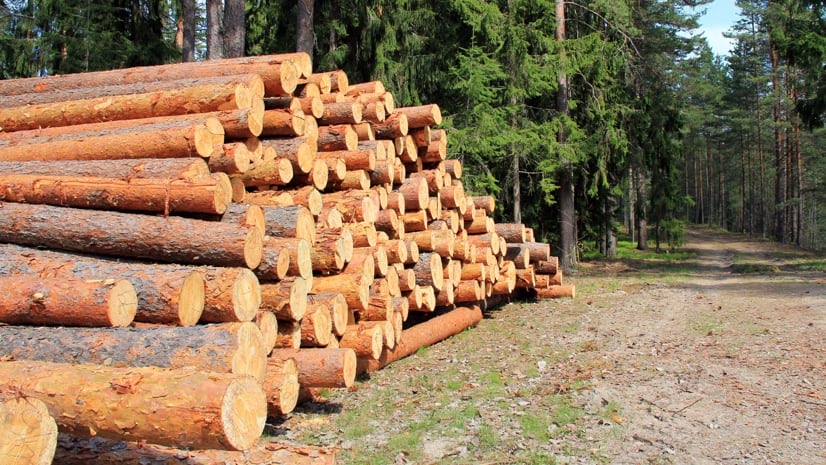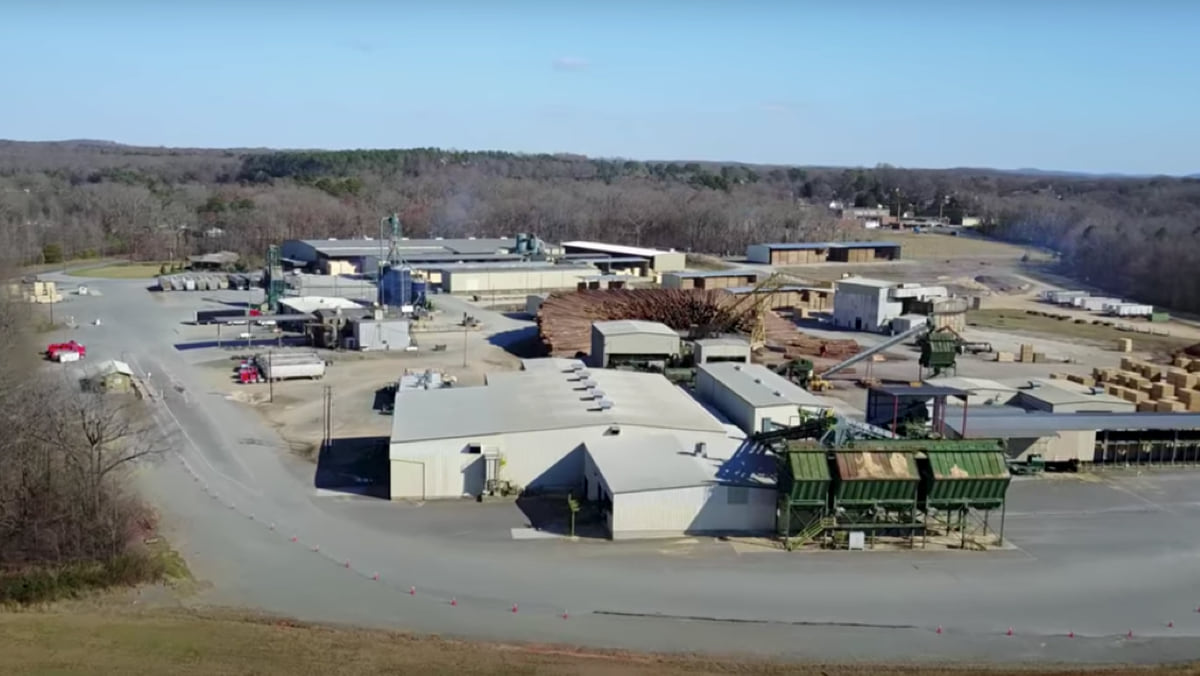

December 16, 2019 |
July 13, 2021

The southern yellow pine forests across the southeastern United States provide the country’s primary source of construction lumber. The wood is strong and dense, and it holds nails well. It was also plentiful and cheap, until the recent pandemic-related home remodeling trend. In response to increased demands, lumber companies are running mills at capacity, while reveling in a 280 percent price spike after many lean years.
That demand hasn’t dulled efforts by one lumber company to keep designing better ways of doing business. The company has remained committed to sustainability by using high-tech methods in a decidedly analog place—the forest. In an industry accustomed to slim profit margins, H.W. Culp Lumber Company, based in New London, North Carolina, has been using location intelligence to make more informed decisions about where it harvests and how far it will drive to get the lumber it needs as fuel costs rise.
“When you’re buying [and transporting] a half million tons a year, that becomes real money, really quick,” said Chris Charest, procurement forester at Culp Lumber.
The latest technology adoption comes years after the fourth-generation family-owned business, in operation since 1915, first automated its mill operations in the mid-1980s. And it continued to focus on increased efficiencies and new technologies to survive the Great Recession that began in late 2007.
When logs get to the mill, machines take over—independently scanning, assessing, and sorting to maximize profits.
“Once it’s in the mill—unless there’s something that goes totally haywire—a human doesn’t make a decision,” said Charest. “The computer will cut a 16-foot board in half if it will make a penny or more difference in price.” The resultant products include yellow pine lumber, timbers, boards, and by-products, including sawdust, shavings, and chips.
Every part of the tree is valuable, but there’s a greater value for a #1 board with its dense grain pattern and smaller, tighter knots. A computer at the mill does the grading, using machine vision to assess and sort boards at a pace of 150 pieces per minute.
Charest marvels at the efficiency gains in the mill and sweats the tight margins in his role as procurement forester. Now, he’s working to tie a modern geographic information system (GIS) to location-aware apps to streamline workflows in the forest—from assessing to cutting to hauling. The field apps collect data, feeding the analysis of forests to determine if a specific timber stand can be logged profitably. A lot of that comes down to the miles of travel.

The Culp Lumber mill operates four-and-a-half days a week with continuous sawing for 10 hours per day. Before the Great Recession, the mill produced 425,000 board feet per day, and now they produce 700,000. To keep up with the pace of production, 100 tractor trailer loads of pine sawlogs are required every day.
Thankfully, this part of the country has plenty of supply. Even though Culp Lumber harvests trees only within a 100-mile radius of its mill, the pace of pine growth and the amount of pine forest in the area can more than keep up.
“We’re seeing the benefits of the Conservation Reserve Program when the federal government paid landowners to take land out of agriculture production and put it in trees, Charest said. “And the trees are growing faster than we’re cutting them right now.”

The Culp family owns several thousand acres of forest that provides some of the wood it mills, but the bulk of it is bought from other landowners in a process that involves sealed bidding. The landowner sets the sale date and provides a map of the tract that the bidders appraise. On the date and time of the sale, the bids are opened and the highest one gets to log the tract.
Charest manages a group of five foresters who look at the trees in a process called timber cruising to find the right logs within the shortest distance.
“We generate cruise points with systematic spacing for every forest we evaluate, and we can manipulate the layout on the computer through GIS before we leave the office, so we know what we’re going to do before we hit the woods,” Charest said.
Because Culp Lumber specializes in yellow pine, Charest looks to buy tracts with 60 percent or greater of the species. Out in the forest, each worker measures trees at the center of the plot, recording the diameter, height, species of the trees, and the stem quality. The statistical measurements of trees are then fed into a program back in the office to generate lumber volumes that Charest uses to determine the value for the stand of timber.
One of the next workflows Charest is addressing is to pass along maps to the loggers so they can see boundary lines and know where they are on a tract of land. The aim is to ensure that all (and only) trees bought get harvested. “Cutting over on someone else’s timber gets expensive,” Charest said.
Most logging crews are down to a three or four-person operation with heavy equipment. The feller buncher is the cutting machine with a big saw head that can drive through a tree, pick it up and lay it down in bunches. Then the skidder picks up the bunch and drags it to where the loader will delimb it and throw it on a truck.
Culp Lumber knows when a truck has been loaded and how many logs are coming in. But routing the trucks and paying the drivers for the miles they’ve driven required the more detailed maps that GIS produces. A recent data upgrade with the location of low-weight bridges made a big difference in trucking costs.
“If we pay 15 cents a ton-mile,” Charest continued, “let’s say we buy a tract of timber, and it’s 40 miles back to the mill. That’s 40 times 15 cents for $6 a ton. If there’s a low-weight bridge, we’re legally not allowed to cross it. So if it’s 10 miles to go around it, all of a sudden, I have to add $1.50 per ton to the delivery price. If the tract is 10,000 tons, then it’s going to cost us $15,000 more because of one low-weight bridge.”

Charest always has a calculator close at hand because the delivery price is crucial to answering his key procurement question, “What am I willing to pay?” Calculating trucking costs correctly before the timber is bought allows him to determine what he can pay the landowner and still make a profit.
“The ability to build a special routing program based on the parameters that we need for our log trucks became huge for us,” Charest said. “As fuel rates go up and the truck driver shortage grows, miles are going to become more important to companies.”
Culp Lumber participated in the Sustainable Forestry Initiative (SFI) for 15 years and credits the process with instilling good procurement practices that it continues to follow.
“The intent is to keep it a family-run mill, so we are concerned about the longevity and availability of the product in our wood basket,” Charest said. The wood basket refers to Culp’s harvest area as well as the whole southern states, which have been producing lumber for centuries. The wood basket region stretches from eastern Texas to Maryland, and it produces 60 percent of the country’s wood products.
The US timber industry lost more than 70,000 jobs after the Great Recession. Mills closed, and those that were still running operated at limited capacity. At Culp Lumber, the family-oriented focus helped get it through the tough times with everyone pitching in to find efficiencies and scrape out a profit to keep everyone employed.
“This is a real family-oriented culture,” Charest said. “We have 40-year employees, 30-year employees, 20-year employees. We have employees that started working here before they got out of high school, and they don’t go anywhere until they retire.”
The culture provided motivation and kept everyone asking how to improve throughput and profit in the mill. The latest wave of change in process at Culp Lumber involves digitalization to bring information together to tell a complete story and involve the entire staff.
“A lot of information is kept in my head and my boss’s head, and the owner recently asked what would happen if (we) ‘met the beer truck’ one day,” Charest said, referring to their untimely demise. “The answer was, ‘that would be a very bad day for Culp Lumber.’ So, now we’re looking at how to bring everything together so everyone in the organization understands what’s going on.”
Charest has embraced modern GIS and the location intelligence it delivers, providing enhanced employee awareness through a shared map. He hopes to bring similar efficiency gains to the procurement side of the business as the company has seen in the mill.
“I’m starting to track bids we lost and going back to run the analysis on why we lost them,” Charest said. “Before, we just threw them in a drawer. We’re making the information more readily available and usable so we can look for any little advantage because at the volumes we’re running, every little thing you do can translate to huge numbers.”
Learn more about how GIS helps maximize the value of timber assets.

December 16, 2019 |

April 22, 2021 |

May 4, 2021 |